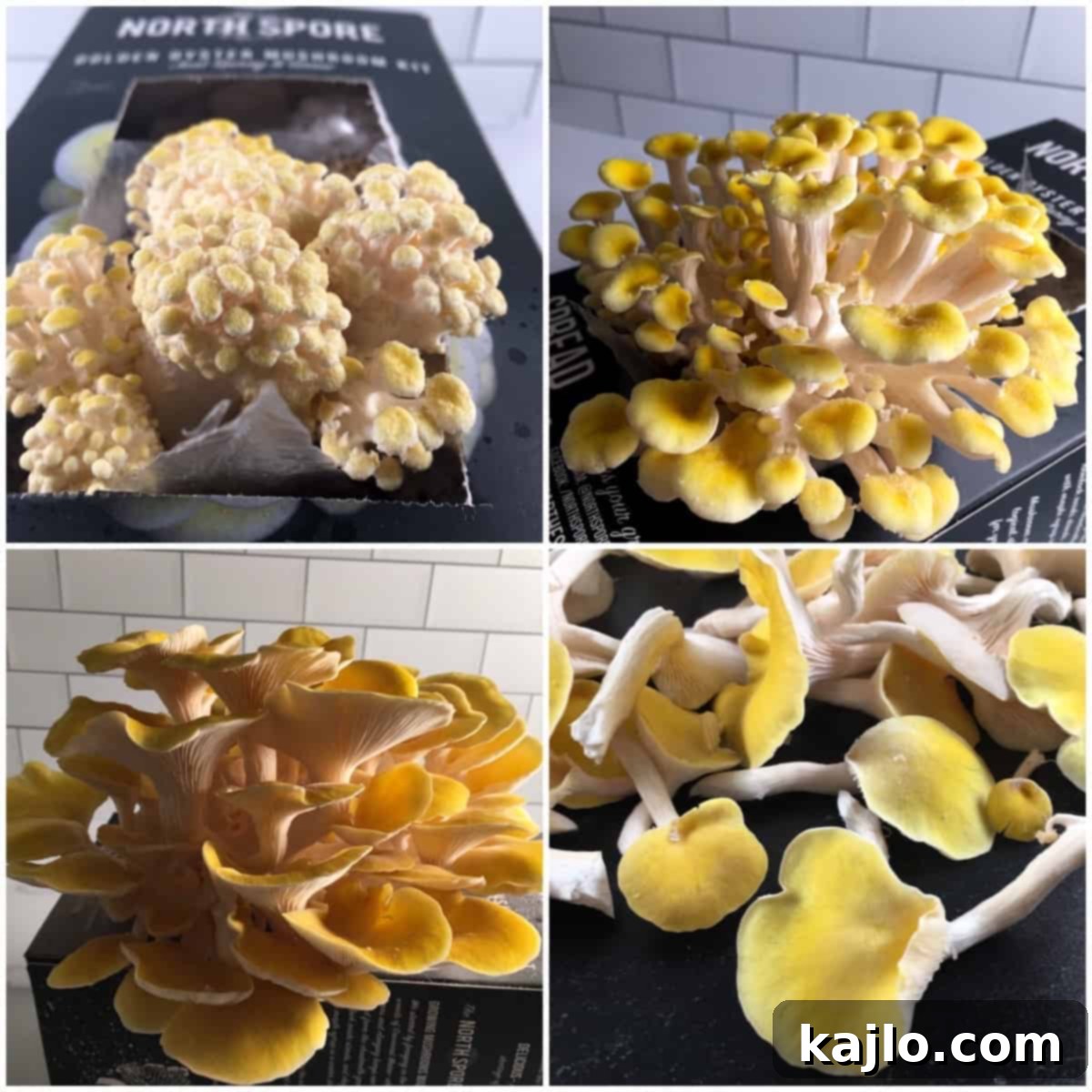Embark on a fascinating journey into the world of mycology with the vibrant **Golden Oyster Mushroom** (Pleurotus citrinopileatus), also affectionately known as the Yellow Oyster Mushroom. This comprehensive guide will equip you with all the knowledge you need to successfully cultivate, harvest, store, and enjoy these beautiful edible fungi. Whether you’re a budding mycologist or a seasoned gardener looking for a new challenge, growing golden oyster mushrooms from a simple kit offers a rewarding experience, transforming a spore-laden block into ready-to-cook delicacies in just a week! Forget the uncertainties of foraging; with a home grow kit, you’ll have a consistent supply of fresh, gourmet mushrooms at your fingertips.
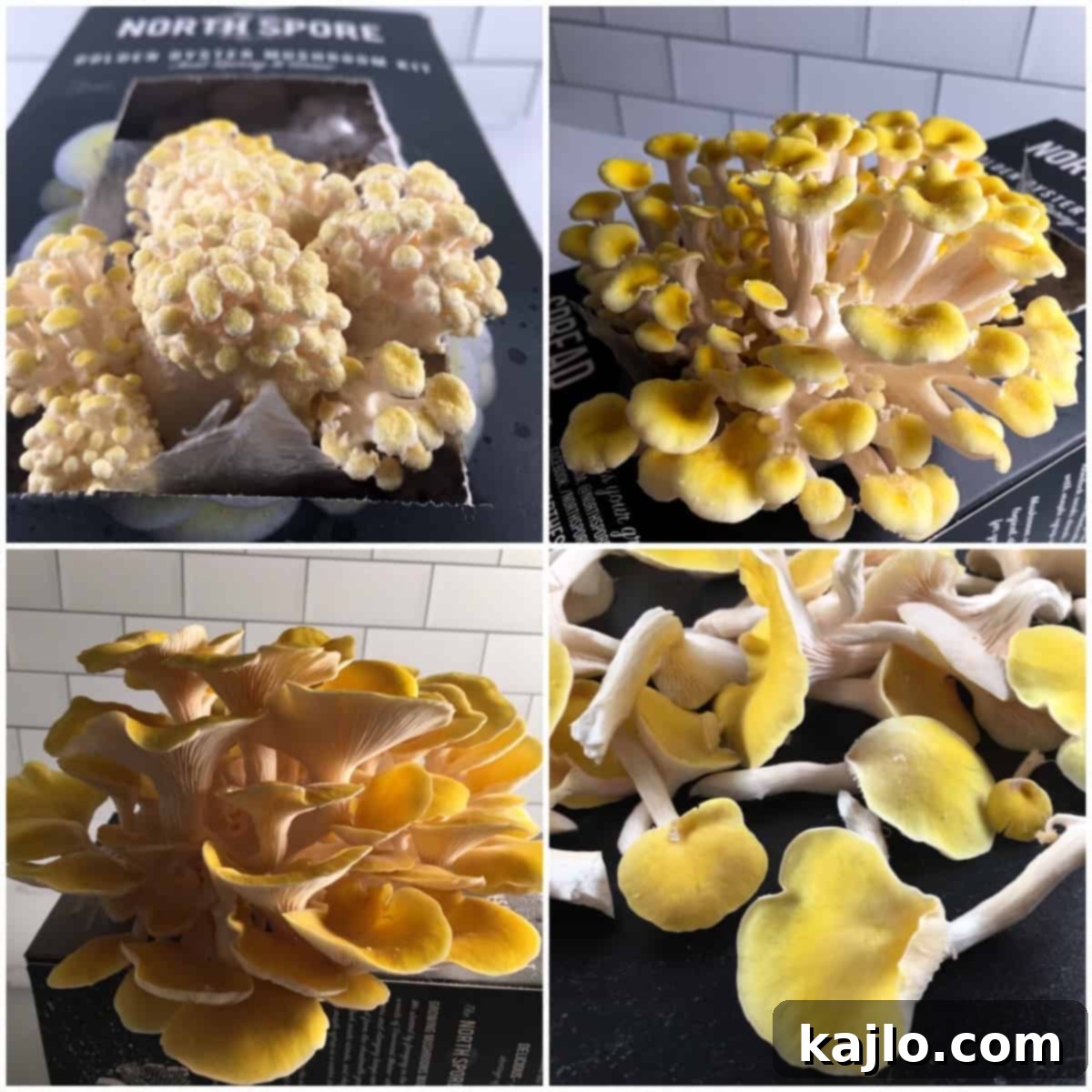
Mastering the Art of Harvesting Golden Oyster Mushrooms
One of the most exciting moments in mushroom cultivation is knowing precisely when your efforts will yield a delicious harvest. While some oyster mushroom kits suggest a two-week period to first see growth, many cultivators, myself included, often observe the emergence of tiny mushroom pins in as little as two to four days. These “baby mushrooms” develop rapidly, transforming into beautiful, golden clusters ready for picking. Understanding the optimal harvesting window is crucial for maximizing flavor, texture, and subsequent flushes.
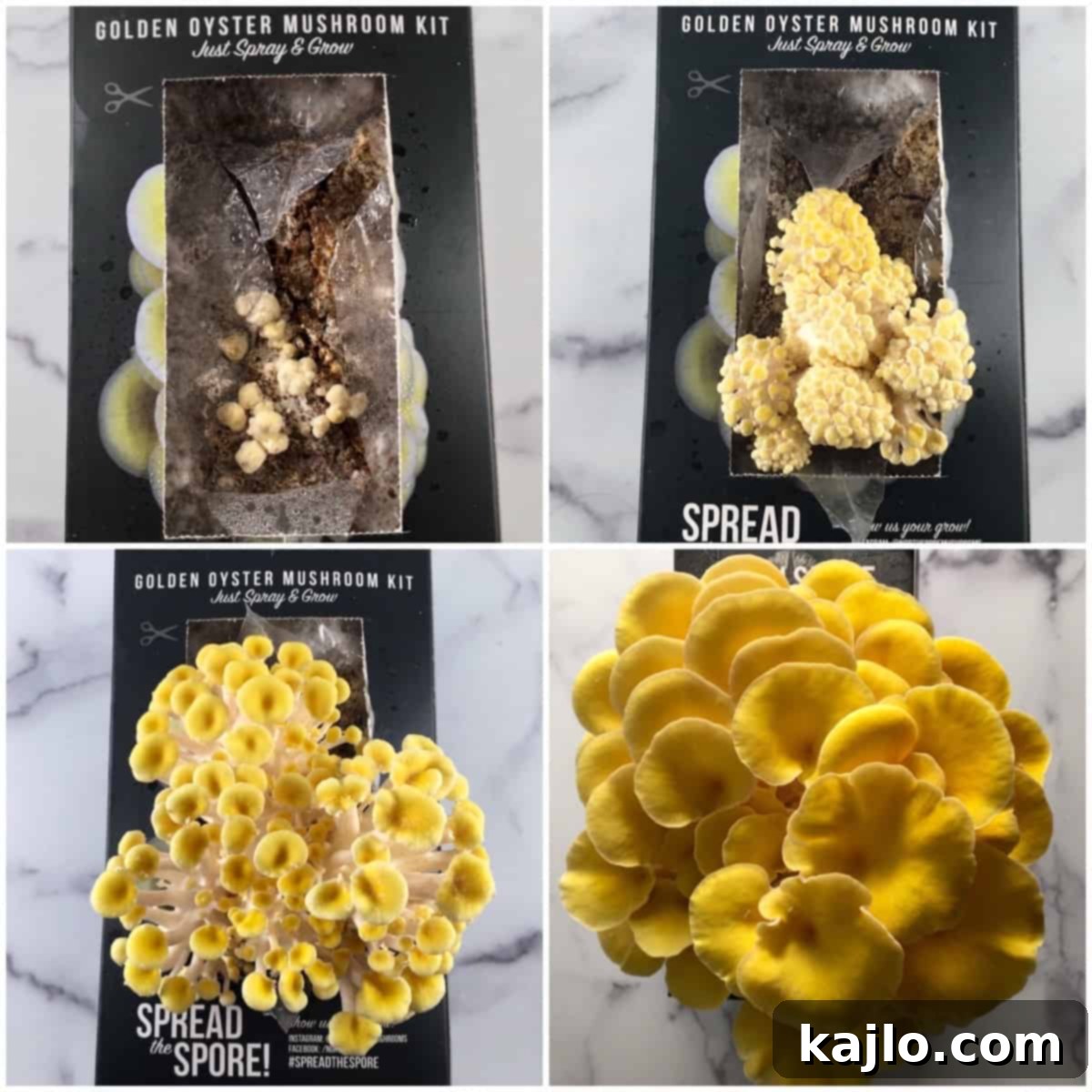
Golden oyster mushroom growth stages (clockwise from top left):
- First Growth (Day 2): Tiny, almost imperceptible pinheads begin to emerge from the mycelium block. These are the earliest signs of your future harvest.
- Developed Mushroom Pins (Day 4): The pins grow into more distinct, recognizable mushroom shapes, albeit still small. At this stage, you can often discern the characteristic cap and stem formation.
- Rapid Mushroom Growth (Days 5-6+): This is when the magic truly happens! The mushrooms expand rapidly in size, forming dense, vibrant clusters. You’ll notice them doubling in size daily under ideal conditions.
- Mushrooms Ready for Harvest (Days 7-14, depending on growing conditions): The caps have opened but are not yet fully flattened or concave. This is the prime time to harvest for peak flavor and texture.
Identifying Peak Readiness: How to Know When Golden Oyster Mushrooms Are Ready to Pick
The ideal time to harvest golden oyster mushrooms is typically 2-5 days after you first observe the pins. A key visual indicator is the shape of the mushroom caps. You should aim to harvest them just as the caps begin to flatten out but before they become fully concave, curling upwards at the edges. Harvesting at this stage ensures the best flavor, a firm yet tender texture, and prevents the mushrooms from releasing all their spores, which can lead to a messy growing area.
For many home growers, the total oyster mushroom growing time from cutting the plastic to harvest can be as short as 7 days, particularly under optimal conditions. However, environmental factors play a significant role. If your home is cooler or has lower humidity, the growth process can slow down considerably, potentially extending the time to 2.5 weeks or even longer. Consistent humidity and temperature are your allies in achieving a swift and abundant harvest.
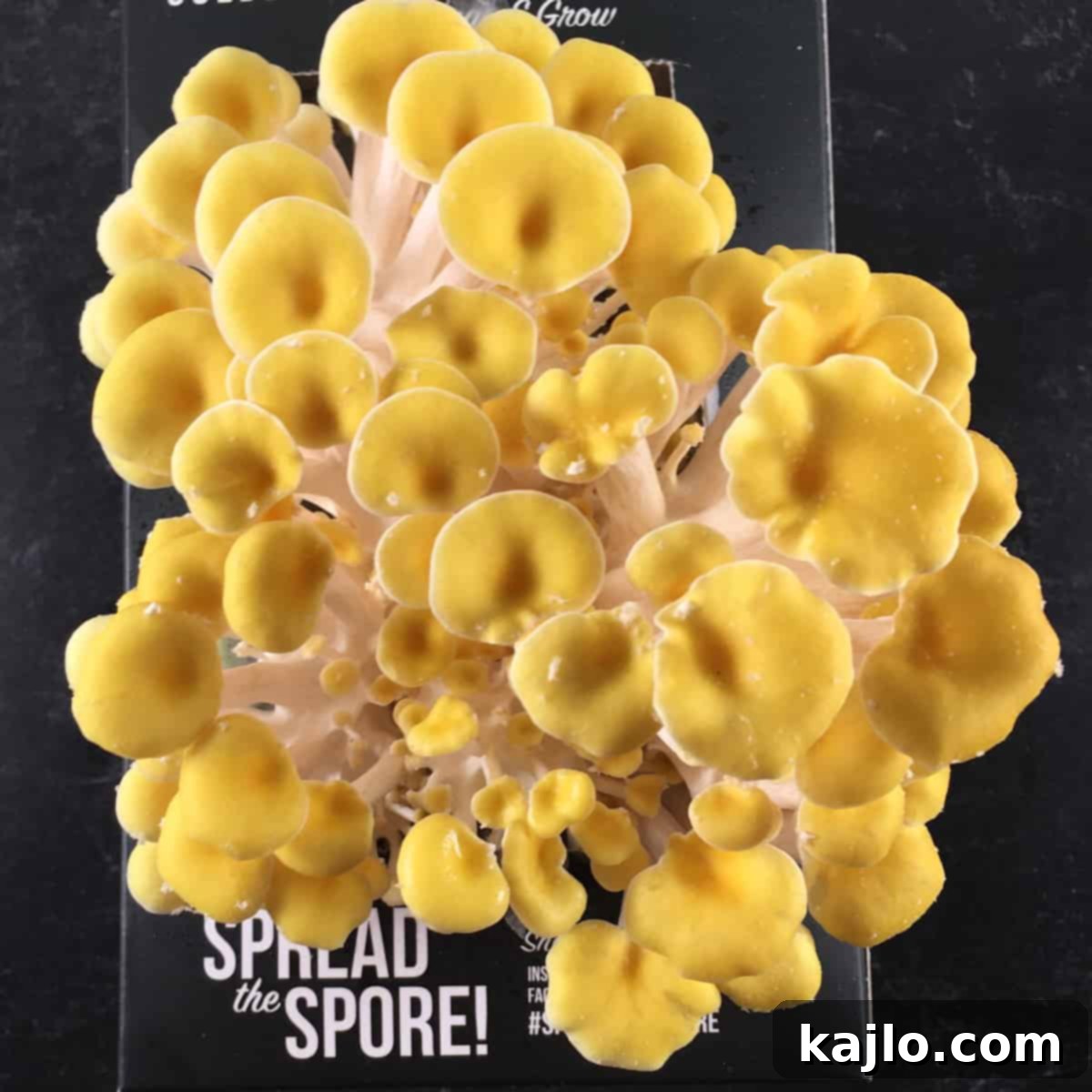
Optimal Size and Growth Potential: How Big Can Golden Oyster Mushrooms Get?
While golden oyster mushrooms can certainly grow larger, their caps typically reach an optimal diameter of 0.8-2.4 inches (2-6 cm), with stems ranging from 0.8-2 inches (2-5 cm). This size range, as noted by Specialty Produce, represents the peak of their culinary quality. Mushrooms harvested within this range will possess the most desirable texture and concentrated flavor. Allowing them to grow significantly beyond this point often results in a tougher texture, reduced flavor intensity, and a shorter shelf life, as the mushroom’s energy is increasingly directed towards spore production rather than maintaining its flesh.
The Risks of Delay: What Happens If You Wait Too Long to Harvest Oyster Mushrooms?
Patience is a virtue, but in mushroom harvesting, timing is everything. Delaying the harvest of oyster mushrooms can lead to several undesirable outcomes. Overly mature mushrooms may develop a slimy texture, an unpleasant off-odor, and can even begin to show signs of mold. Furthermore, as mushrooms age, they release a significant amount of spores, which can create a fine, powdery coating on surfaces around your growing area and potentially impact air quality. Timely harvesting not only ensures the best quality product but also prepares the fruiting block for subsequent flushes, maintaining its vigor and potential for future yields.
Creating the Perfect Environment: When to Use a Mushroom Grow Tent
Humidity is paramount for successful **golden oyster mushrooms growing conditions**. If the air around your mushroom kit is too dry, your precious mushrooms may “abort,” meaning they stop growing and potentially die. To combat low humidity and ensure your mushrooms thrive, a simple DIY humidity tent can be a game-changer. Take a clear plastic bag and punch several ½-inch (2.54 cm) holes all over it. Mushrooms require abundant fresh air exchange (FAE) to prevent stunted growth and CO2 build-up, so these holes are crucial for proper ventilation.
Drape this perforated bag over your mushroom grow kit, ensuring it creates a humid microclimate around the block. Regularly mist the inside of the bag with water, aiming to keep the environment consistently moist but not waterlogged. Once the mushroom pins have formed and are growing visibly, you can often remove the tent, but continue misting the mushrooms directly multiple times a day. Another scenario where a humidity tent proves invaluable is if your mushroom block arrives damaged or broken. Gently press the block back together as best you can and use the humidity tent to help maintain moisture and encourage the mycelium to recover and produce a flush.
The Gentle Art of Harvesting Golden Oyster Mushrooms
Harvesting golden oyster mushrooms is a straightforward process, but a gentle approach ensures the health of your fruiting block and encourages future flushes. The most effective method is to use a clean, sharp knife to carefully cut the entire cluster of golden yellow mushrooms free from the substrate. Position the knife blade as close to the block as possible, cutting through the base of the stems where they connect to the mycelium. This clean cut minimizes damage to the block, leaving it intact for subsequent growth cycles. While you can also break them off with your fingers, using a knife generally results in a cleaner separation and less disturbance to the delicate mycelial network.

After successfully harvesting your first flush of golden oyster mushrooms, your work isn’t over! Continue to care for the fruiting block by misting it regularly with water. This consistent hydration is key to re-invigorating the mycelium and encouraging it to produce additional harvests, known as “flushes.” With proper care, you might be pleasantly surprised by several more bountiful yields from a single kit!
Maximizing Your Yield: How Many Times Can You Harvest Golden Oyster Mushrooms?
The number of golden oyster mushroom flushes you can obtain from a single kit varies depending on the brand, the quality of the substrate, and your cultivation practices. Many kits are designed to produce at least one substantial harvest. However, with diligent care, including consistent misting and appropriate environmental conditions, it’s common to achieve two or even three flushes. For instance, my experience showed a second flush appearing about two weeks after the initial harvest. While this subsequent flush was typically smaller in yield than the first, it was incredibly gratifying to see the kit continue producing fresh mushrooms. This multi-flush potential significantly enhances the value and enjoyment of your mushroom growing kit.
Preserving Freshness: Oyster Mushroom Storage Techniques
Golden oyster mushrooms, like many fresh fungi, have a relatively short shelf life. For the best culinary experience, it’s always recommended to harvest them when you’re ready to cook and enjoy them immediately. However, if you find yourself with an abundance or need to store them for a short period, proper technique is essential to maintain their quality. Store unwashed oyster mushrooms in a small paper bag within the main compartment of your refrigerator. Avoid plastic bags, as they trap moisture, which accelerates spoilage. The paper bag allows for air circulation while absorbing excess moisture, creating an optimal environment.
It’s best to place them in the main part of the fridge rather than the vegetable drawer, which can sometimes be too humid. Stored correctly, golden oyster mushrooms should remain fresh for approximately 5-7 days. Remember, always inspect your stored mushrooms for any signs of sliminess, discoloration, or off-odors before consumption.
The Simplicity of Cultivation: How to Grow Oyster Mushrooms with a Kit
Mushroom kits have revolutionized home mushroom cultivation, making it incredibly accessible for beginners. At its core, a mushroom kit typically contains a “fruiting block” – an amended sawdust block, often supplemented with nutrients, that has been fully colonized by mushroom mycelium. This block is the growing medium from which your mushrooms will emerge. The beauty of these kits lies in their simplicity, requiring minimal effort for maximum reward.
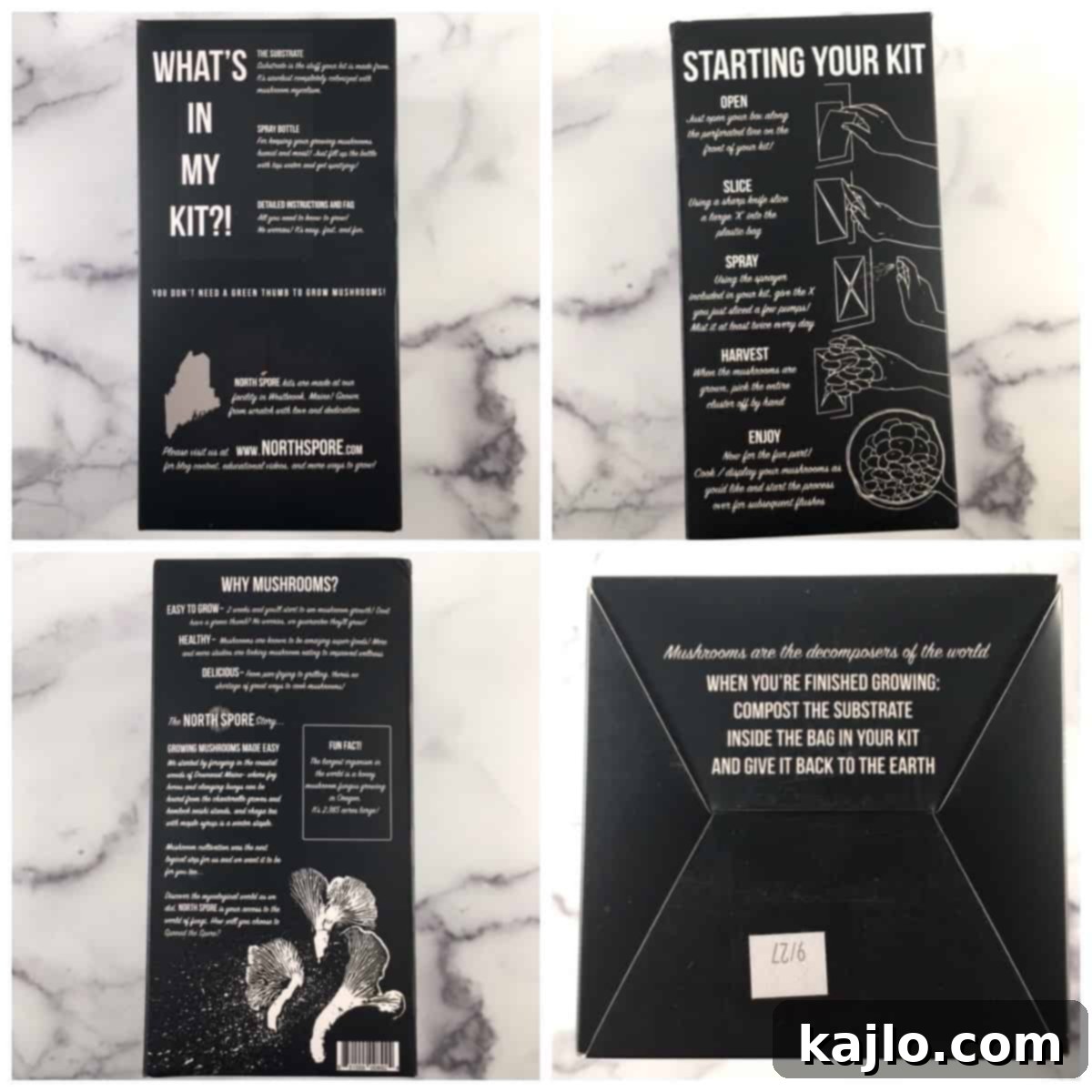
While specific instructions may vary slightly by brand, the general process is straightforward. First, you’ll need to create an opening in the kit for the mushrooms to fruit. This typically involves removing a perforated rectangle from one of the long sides of the mushroom kit’s box. Many users find it easier and more precise to use a box cutter, a sharp knife, or even sturdy scissors for this step. Once the cardboard is removed, you’ll expose the plastic bag containing the fruiting block. Carefully cut a large “X” into this plastic film. This opening serves as the primary gateway for your mushrooms to emerge.
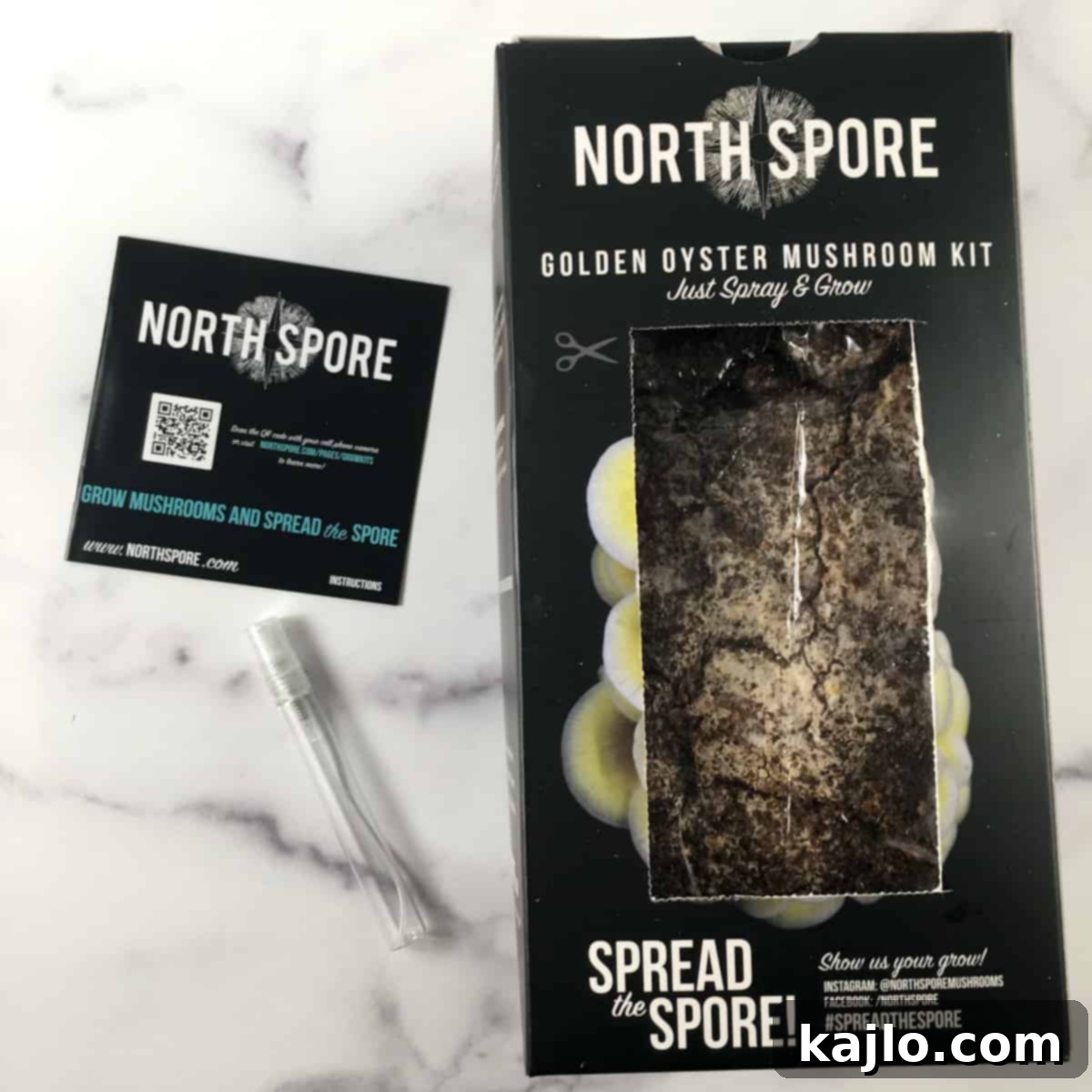
Next, fill a clean spray bottle with water and liberally spritz the exposed plastic where you made the “X” cut. Place your mushroom box in an area that receives indirect sunlight and maintains a consistent room temperature, ideally between 65-80°F (18-27°C). The crucial step from here on is regular misting. You should continue to mist the exposed fruiting block at least twice per day, usually once in the morning and once in the evening. In particularly dry climates, or during drier seasons, you might need to mist more frequently, perhaps 3-4 times a day, to prevent the block from drying out. Keeping the kit in a naturally humid part of your house, like a kitchen or bathroom, can also significantly encourage vigorous growth.
One of the true joys of cultivating mushrooms at home is the opportunity to grow unique, gourmet varieties that are often difficult to find in standard grocery stores. Beyond the golden oyster, you can explore the delicate blue oyster mushroom, the vibrant pink oyster mushroom, or the classic pearl oyster mushroom, each offering distinct flavors and textures. For those seeking a more advanced challenge, there are options like sawdust spawn kits and mushroom plug spawn. These allow for growing oyster mushrooms in outdoor garden beds, on straw bales, or by inoculating logs, offering a more hands-on and sustainable approach (and certainly safer than foraging wild mushrooms without expert guidance!). While log kits may require an initial 24-hour soaking period, the convenience of a “spray and grow” oyster mushroom kit means you can skip this step and begin your fungal adventure almost immediately.
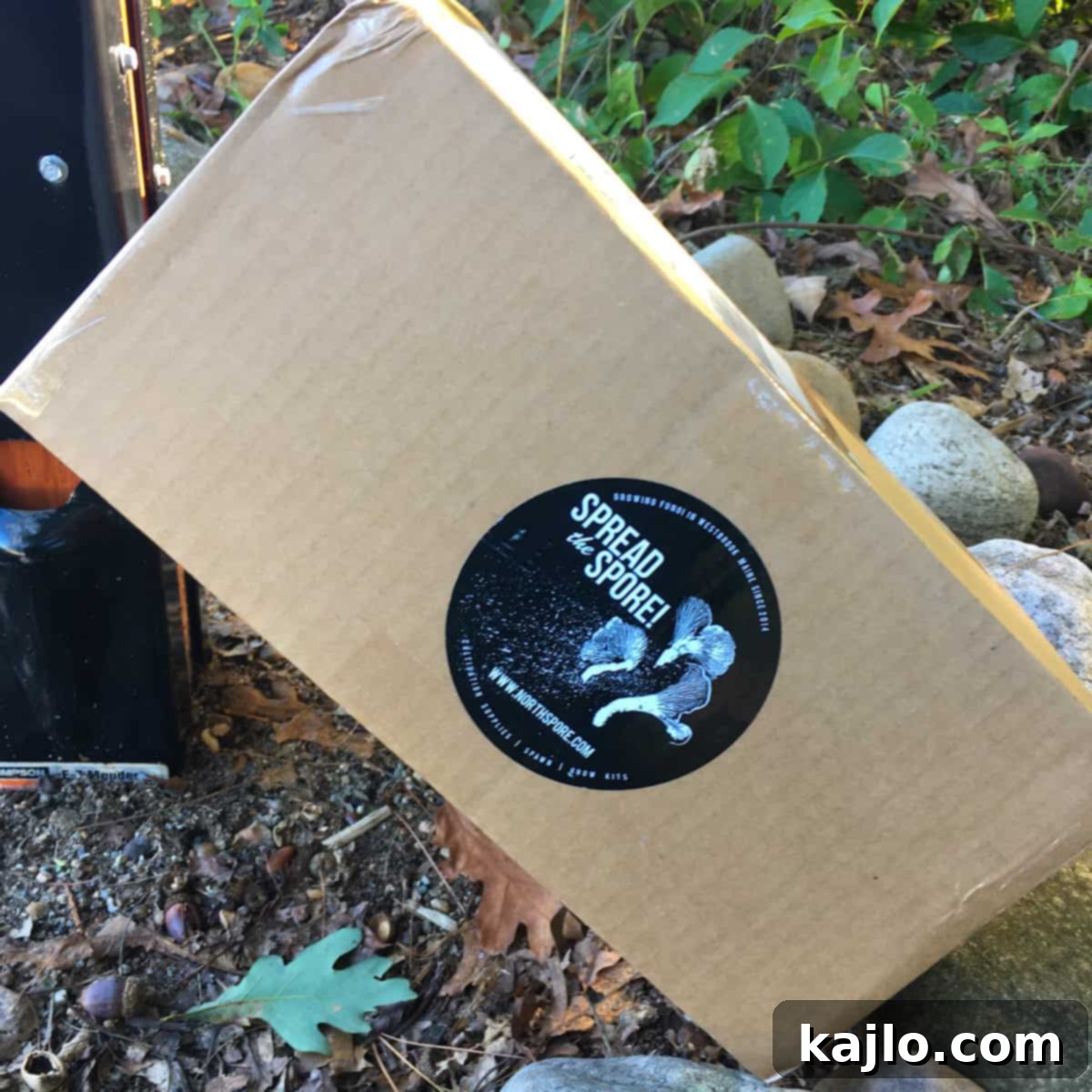
Optimizing Your Harvest: How to Increase Oyster Mushroom Yield
The key to maximizing your oyster mushroom yield lies primarily in carefully controlling the growing environment. Mushrooms are sensitive organisms, and consistent conditions are crucial for abundant flushes. Ensure your oyster mushrooms receive ample humidity and fresh air exchange (FAE). Dry environments and high carbon dioxide levels are the nemesis of growing mushrooms, often leading to stunted growth or complete crop failure. Regularly misting the block and providing good ventilation (e.g., through the holes in a humidity tent or by fanning the mushrooms periodically) are vital practices.
Additionally, the quality and type of oyster mushroom kit can significantly influence your overall yield. Some kits are simply engineered for higher productivity than others. For example, my experience with the North Spore Golden Oyster Mushroom Spray & Grow Kit resulted in an impressive 13.5 ounces (approximately 380 grams) of fresh mushrooms from a single flush, demonstrating the potential for substantial yields with the right kit and care.
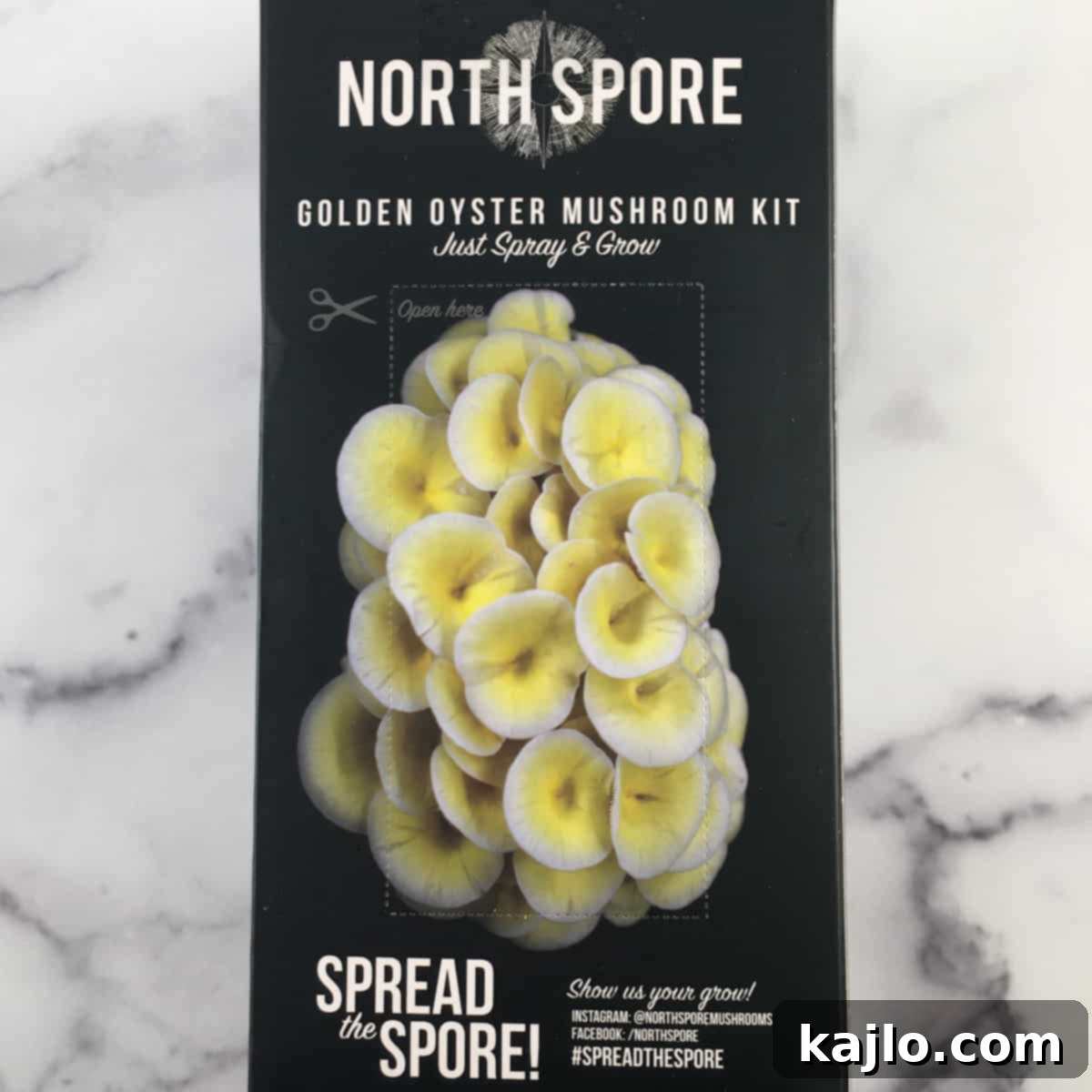
Debunking Myths: Do Mushrooms Need Sunlight?
Unlike green plants, mushrooms do not contain chlorophyll and do not rely on photosynthesis for energy. Therefore, they do not require direct sunlight to grow. In fact, golden oyster mushrooms, like most fungi, thrive in low light conditions, including indirect light. While they don’t need bright light, complete darkness can sometimes lead to misshapen or elongated fruiting bodies as they “reach” for light. A dimly lit room or a spot with indirect ambient light is perfectly sufficient for their development.
The Role of Light: Why Indirect Light is Best for Mushrooms
The preference for indirect or low light in mushroom cultivation is primarily linked to moisture retention. Keeping mushrooms out of direct, intense light helps to preserve the high humidity levels they desperately need to reproduce and grow properly. Direct sunlight can quickly dry out the delicate mushroom pins and the fruiting block, hindering growth and potentially causing premature death. Thus, while it’s a common misconception that mushrooms prefer complete darkness, the reality is they simply prefer conditions where their environment’s moisture can be best maintained, which often correlates with lower light levels.
Culinary Delights: Oyster Mushroom Recipes and Uses
Once you’ve harvested your beautiful golden oyster mushrooms, the culinary possibilities are endless! Their delicate texture and unique flavor make them a versatile ingredient in a variety of dishes. A simple yet incredibly delicious preparation involves pan-frying them in butter or olive oil with minced garlic and fresh herbs like thyme or parsley. For an indulgent treat, you can deglaze the pan with a splash of white wine and finish with a swirl of heavy cream, creating a rich and aromatic sauce that complements the mushrooms perfectly.
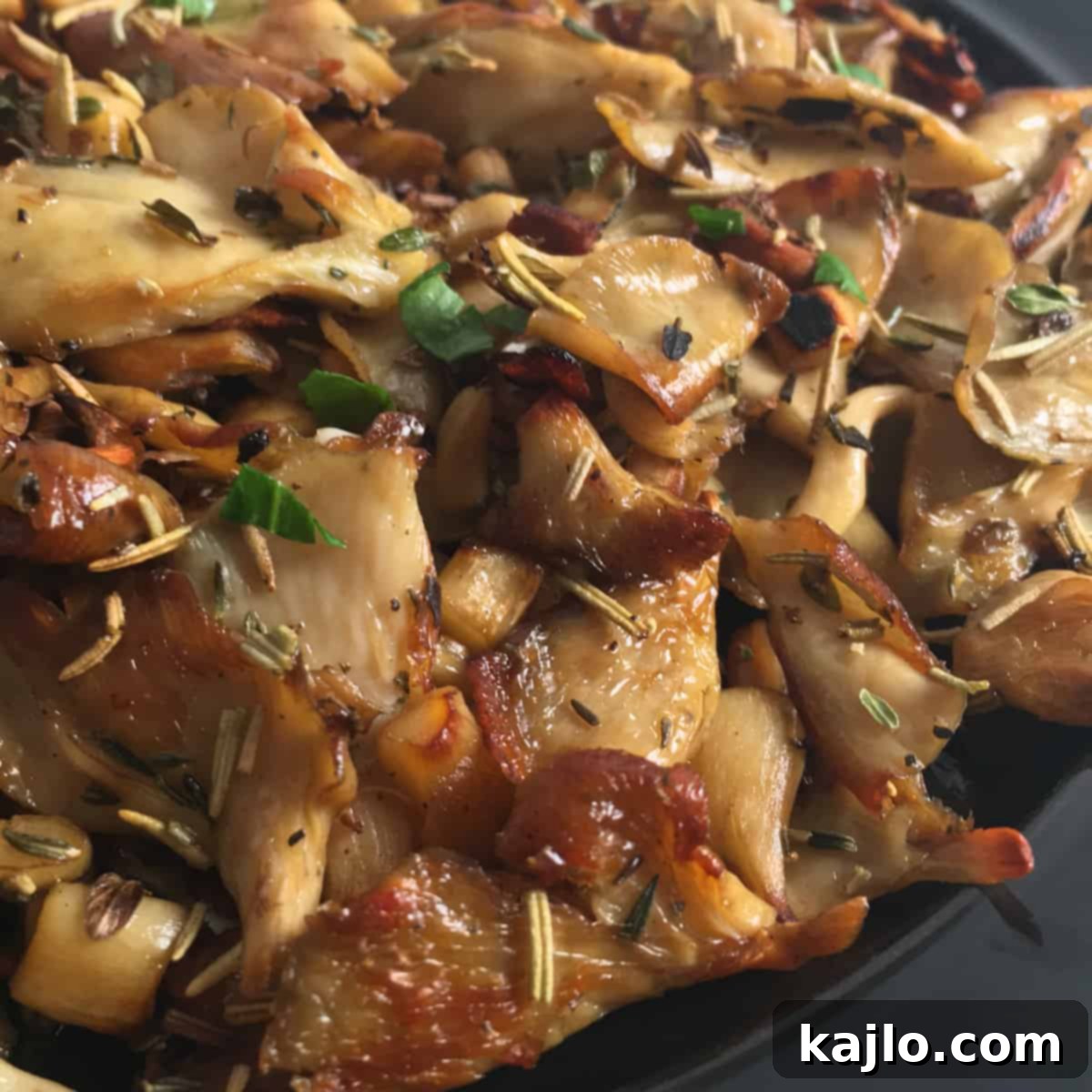
Here are a few more creative and delightful ways to incorporate your homegrown golden oyster mushrooms into your meals:
- Oyster Mushroom Air Fryer Jerky: A fantastic savory snack, offering a unique texture and intense flavor.
- High Calorie Pasta: Elevate a classic pasta dish with the gourmet touch of fresh oyster mushrooms.
- Tempeh Bolognese Sauce: Add depth and umami to plant-based sauces, providing a satisfying meaty texture.
Beyond these suggestions, golden oyster mushrooms are excellent additions to pizzas, stir-fries, omelets, risottos, or as a flavorful side dish for various entrees. Their versatility makes them a favorite among chefs and home cooks alike.
Preparation Essentials: Can You Eat Golden Mushrooms Raw?
While some mushrooms can be enjoyed raw, it is generally recommended to cook golden oyster mushrooms before consumption. Cooking not only enhances their complex flavor profile but also improves their digestibility and makes certain nutrients more bioavailable. Furthermore, for those trying golden oyster mushrooms for the first time, it’s always a good practice to start with a small cooked amount to gauge your personal tolerance, as with any new food.
Flavor Profile: What Do Yellow Oyster Mushrooms Taste Like?
Golden oyster mushrooms offer a captivating and intricate flavor profile that delights the palate. Many describe their taste as sweet and nutty, often accompanied by subtle notes of citrus, lending a bright and refreshing quality. The texture is typically pleasingly tender yet firm, providing a satisfying mouthfeel. However, it’s important to remember that taste is highly subjective. While many find them delightful, some individuals might detect a slight bitterness, particularly if the mushrooms are overcooked or if their palates are more sensitive to certain compounds. Experimenting with different cooking methods can help bring out their best characteristics.
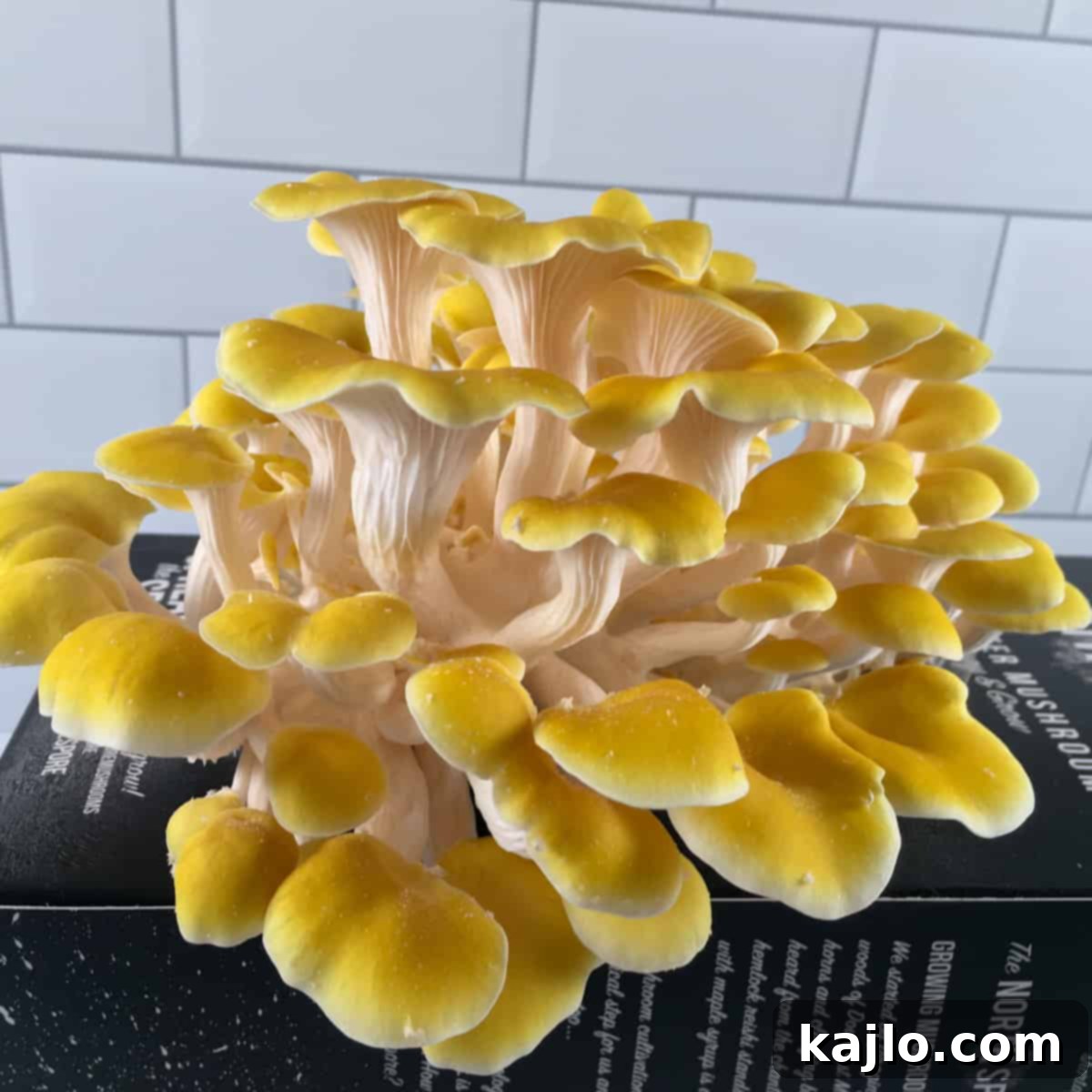
Nutritional Powerhouse: Golden Oyster Mushroom Benefits
Beyond their exquisite taste and ease of cultivation, golden oyster mushrooms are a nutritional powerhouse, making them an excellent addition to almost any diet. These versatile fungi align perfectly with a wide array of dietary needs, including vegan, keto, low-carb, gluten-free, Paleo, and dairy-free lifestyles. Let’s delve into some of the remarkable health benefits these golden gems offer:
- Boosts Vegetable Intake: Although scientifically classified as fungi, mushrooms are culinarily grouped with vegetables and contribute significantly to your daily vegetable intake, aligning with guidelines like MyPlate. Incorporating more mushrooms into your meals is an easy and delicious way to increase your consumption of this vital food group.
- Rich in B Vitamins: Oyster mushrooms stand out for their impressive B vitamin content, often comparable to that found in meats and grains. They are an excellent source of riboflavin (B2) and niacin (B3), which are crucial for energy metabolism and cellular function. They also provide valuable amounts of thiamin (B1), pantothenic acid (B5), and folate (B9), all playing essential roles in maintaining overall health.
- Natural Source of Vitamin D: Depending on their growing conditions, particularly exposure to UV light, oyster mushrooms can be a rare natural food source of Vitamin D. This is a significant benefit, especially for individuals living in northern latitudes or those with limited sun exposure, as Vitamin D is vital for bone health, immune function, and mood regulation.
- Remarkably Low Calorie and High Volume: For those managing weight or seeking nutrient-dense foods, oyster mushrooms are an ideal choice. According to Cronometer, 100 grams of oyster mushrooms provide a mere 33 calories. Their high water content and fiber make them a fantastic addition to high-volume, low-calorie meals, offering satiety without excess calories.
- Essential Minerals for Heart Health: In addition to their vitamin bounty, oyster mushrooms are a good source of vital minerals such as potassium and phosphorus. Potassium is crucial for maintaining healthy blood pressure and fluid balance, while phosphorus plays a key role in bone health and energy production. Integrating these mushrooms into your diet can contribute positively to a heart-healthy eating plan.
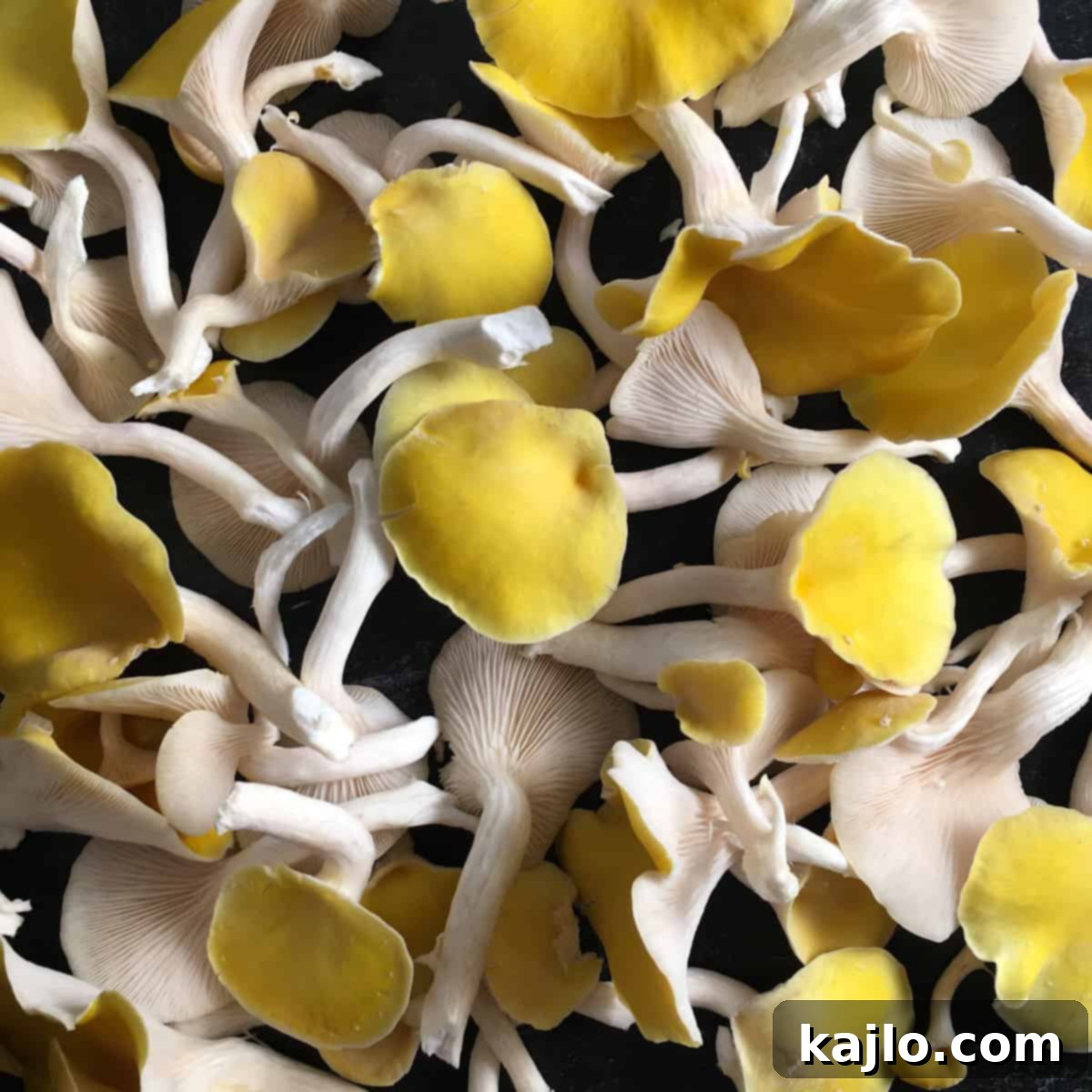
Witness the Magic: Watch Them Grow!
There’s nothing quite as satisfying as observing your golden oyster mushrooms grow from tiny pins to full, luscious clusters. This video offers a visual journey through the growth stages, demonstrating the ease and excitement of cultivating these incredible fungi at home.
Join our community of growers and food enthusiasts! Subscribe to receive our latest recipes, tips, and guides directly to your inbox. Stay connected and follow us on Facebook, Pinterest, Instagram, and YouTube for daily inspiration!
